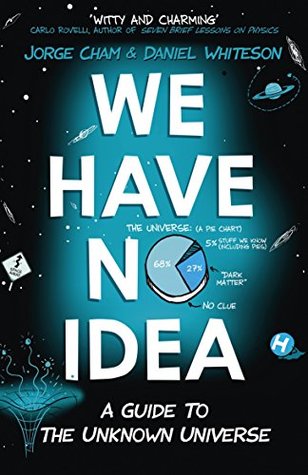More on this book
Community
Kindle Notes & Highlights
Particles—in our current theory—are actually indivisible points in space. That means that in theory they take up zero volume and they are located at exactly one infinitesimal location in three-dimensional space. There’s actually no size to them at all.32 And since you’re made of particles, that means you’re not mostly empty space, you are entirely empty space!
If the gravitational mass of the llama is larger, then it gets pulled by a larger force from the Earth; but since the llama also has a larger inertial mass, it takes a larger force to get it moving. The two effects perfectly cancel out each other, and the cat and llama fall at the same speed.
This kind of question raises the possibility that we could be looking at things all wrong, as we have done in the past (e.g., “The Earth is flat” or “Hey, let me put some leeches on you to cure your disease!”), and that getting a firm, concrete answer could change the way we think about the universe and our place in it. The stakes are very high!
Wormholes may sound like fantasy, but they’re actually not inconsistent with any current law of physics. Unfortunately, all the calculations so far suggest that they would be very unstable, collapsing almost instantly, meaning that you’d hardly have time for an in-flight beverage before it collapses around you.
It turns out physicists have a pretty good story for how we ended up in a nonbland universe full of structure. Here’s the theory: small quantum fluctuations in the early universe were stretched by the rapid expansion of space-time (i.e., inflation) into huge enormous wrinkles that seeded the formation of stars and galaxies by gravity, which was aided by dark matter; and at some point in there, dark energy started stretching space out even farther.


